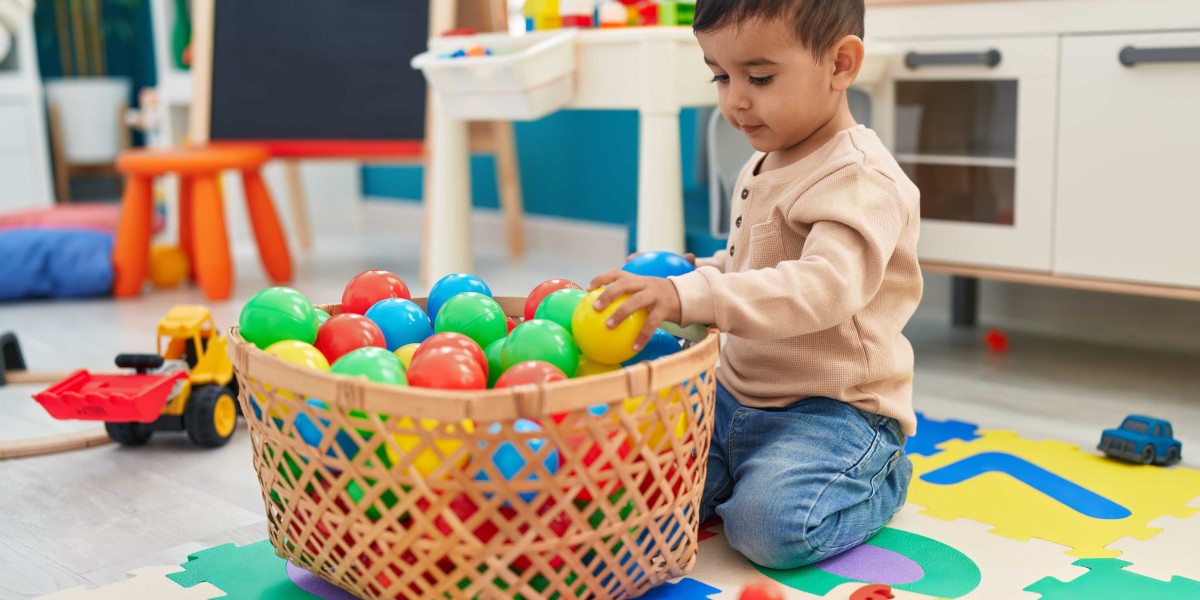When parents search for the best care options for their little ones, two common terms often come up—in home child care and daycare. At first glance, they might seem similar, but there are important distinctions in structure, environment, and style of care. Understanding these differences helps parents make confident decisions that fit their child’s needs, family values, and daily routine.
Understanding In-Home Child Care
In home child care refers to a setup where the caregiver provides services within a home environment rather than a large facility. This could mean hiring a professional caregiver to come into your own home or choosing a licensed provider who runs child care services from their residence.
This option often feels more personal and intimate. Children usually spend their day with fewer peers, creating a quieter and more familiar environment. Caregivers in such settings often have the flexibility to adapt schedules based on each child’s needs, whether that’s nap times, play routines, or learning activities.
Parents often appreciate the home-like environment because it mimics family settings. It’s less overwhelming for infants or toddlers who may not be ready for bustling group environments. Additionally, children can receive more personalized attention due to the smaller ratio of kids to caregivers.
Understanding Daycare
On the other hand, daycare typically takes place in a center or facility designed to care for multiple children at once. These centers often cater to infants, toddlers, and preschool-aged children with different rooms or programs for each age group.
Daycare facilities are usually licensed and regulated with structured programs, scheduled activities, and a professional staff of caregivers and teachers. Children may follow a daily routine that includes meals, nap times, group play, arts and crafts, and educational activities.
Parents may prefer daycare centers because they provide opportunities for socialization. Children get to interact with peers their own age, practice communication, and learn important social skills in a group setting. The structured environment also prepares them for the transition into preschool and kindergarten.
Key Differences Between In-Home Child Care and Daycare
To decide which setting is best, it’s important to look at the differences side by side.
1. Environment
The environment in in home child care is typically warm, familiar, and family-like. Care happens in a living space, often with play areas set up in a home rather than a classroom. This creates a sense of comfort for children, especially those just starting out in care.
In contrast, daycare centers resemble small schools. They are often larger, more structured, and designed to accommodate many children at once. This environment helps children experience group learning and prepares them for school-like routines.
2. Group Size and Ratios
Group size is one of the biggest distinctions. In-home care often involves smaller groups, sometimes just a handful of children. This allows caregivers to provide more individualized attention.
Daycare centers usually manage larger groups with multiple caregivers. Regulations ensure proper child-to-staff ratios, but the overall setting is still busier and more structured.
3. Flexibility vs. Structure
Families seeking flexibility often lean toward in home child care because schedules can be adjusted to meet unique needs. If a child has a specific nap routine or requires individual support, the caregiver can adapt more easily.
Daycare centers, by contrast, run on strict schedules to ensure all children are cared for consistently. Meals, activities, and naps often occur at the same time every day, which can help establish routines but leaves less room for personal customization.
4. Socialization
Daycare centers shine when it comes to socialization. Children interact with peers, learn cooperation, practice communication, and adapt to group dynamics. These early social skills are crucial for school readiness.
While in home child care still provides social opportunities, the smaller group size limits the variety of peer interactions. However, this can be beneficial for children who feel shy or need extra time to adjust to new environments.
5. Cost
Costs vary widely depending on location and the caregiver’s qualifications. In-home care can sometimes be more affordable than daycare, particularly if run by a single caregiver. However, private in-home care provided by a nanny in the family’s home may be more expensive.
Daycare centers usually charge fixed rates based on age groups and program options. Prices may be higher, but families often gain access to structured learning, licensed staff, and built-in social opportunities.
6. Regulations and Licensing
Daycare centers typically follow strict licensing requirements set by state or national authorities. These include safety protocols, staff training, health inspections, and curriculum guidelines.
In-home providers may also be licensed, but the requirements vary by region. Parents should always confirm whether an in-home provider meets legal standards and has proper certifications.
7. Education and Learning
Many daycare centers incorporate early education programs that introduce letters, numbers, and foundational skills. Children are guided through activities designed to prepare them for school.
In-home providers may or may not follow a structured educational program. Some offer play-based learning or personalized activities, while others focus mainly on care and comfort.
Pros and Cons of In-Home Child Care
Pros
Smaller group sizes with individualized attention
Flexible scheduling and routines
Comfortable, family-like environment
Potentially lower costs depending on setup
Cons
Limited socialization opportunities
May lack structured curriculum
Quality varies depending on the caregiver
Fewer backup options if the caregiver is unavailable
Pros and Cons of Daycare
Pros
Strong socialization opportunities with peers
Structured curriculum and daily routines
Licensed staff and regulated facilities
Prepares children for school environments
Cons
Less flexibility with schedules
Larger groups can feel overwhelming
Higher costs compared to some in-home options
Increased exposure to illnesses due to group setting
Which Option Is Best for Your Child?
The decision often comes down to your child’s temperament, your family’s schedule, and your priorities as a parent.
If you value flexibility, personal attention, and a homelike environment, in home child care might be the right fit.
If you want your child to socialize, experience structured learning, and adapt to school-like routines, a daycare center may serve your family better.
Some parents even choose a combination—starting with in-home care when children are infants and moving to daycare once they reach preschool age.
Tips for Choosing the Right Care Option
Visit the setting in person – Observe how caregivers interact with children and whether the environment feels safe and welcoming.
Ask about routines – Learn about daily schedules, nap times, meals, and activities.
Check licensing and certifications – Ensure the provider meets your region’s standards for safety and quality.
Consider your child’s personality – Think about whether they thrive in small groups or enjoy larger, more active settings.
Evaluate costs and logistics – Factor in location, transportation, and affordability.
Wrapping Up
Both in home child care and daycare offer valuable benefits to families, but they serve different needs. In-home care provides intimacy, flexibility, and a nurturing family-like setting. Daycare centers create structured environments that promote socialization and early education.
The “best” choice depends on what matters most to you—personalized attention, flexible routines, or opportunities for group learning and social growth. By carefully evaluating the differences and considering your child’s unique personality, you can make an informed decision that brings peace of mind and supports your child’s development.








